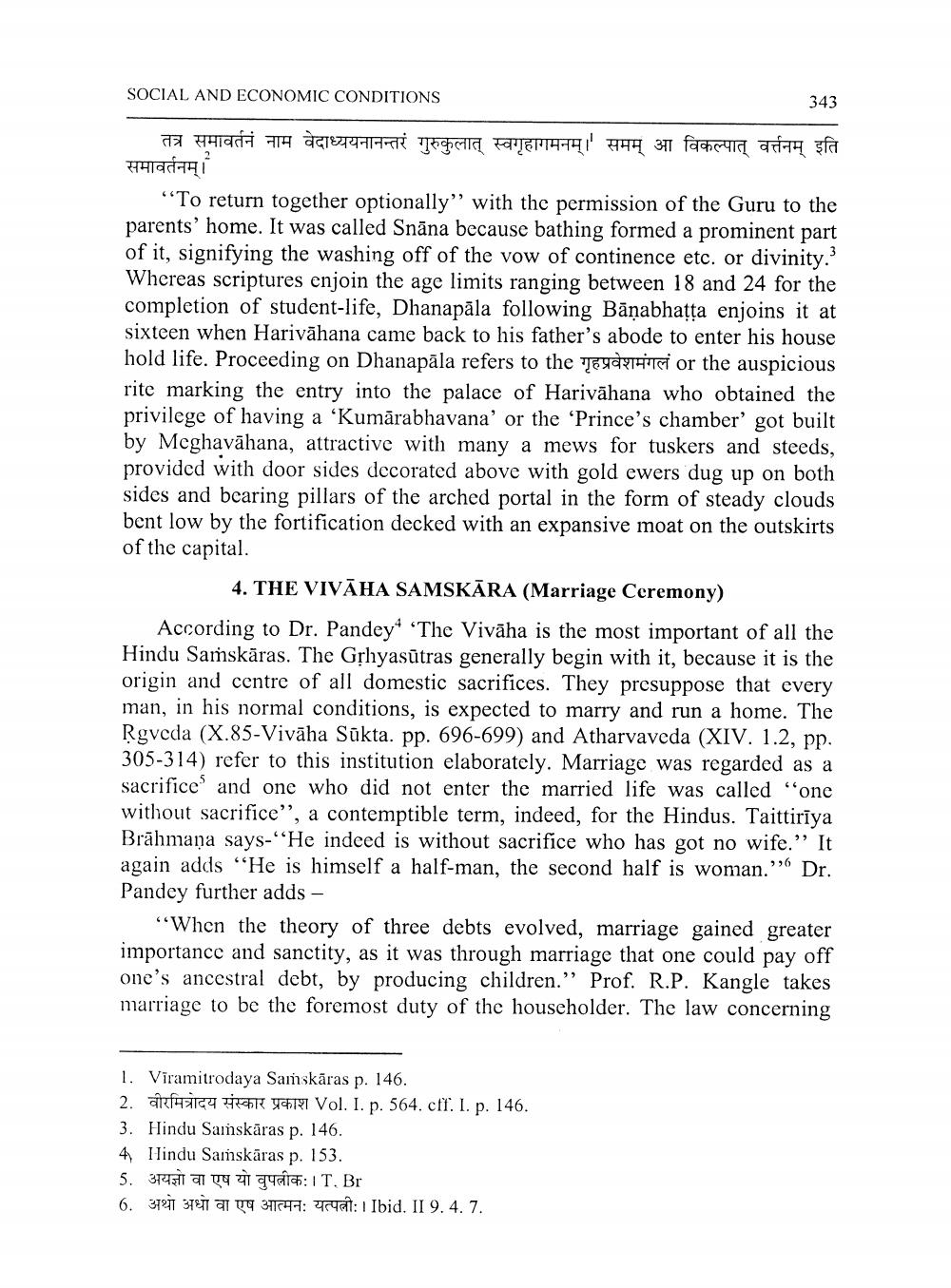________________
SOCIAL AND ECONOMIC CONDITIONS
343
तत्र समावर्तनं नाम वेदाध्ययनानन्तरं गुरुकुलात् स्वगृहागमनम्।' समम् आ विकल्पात् वर्त्तनम् इति समावर्तनम्।
“To return together optionally” with the permission of the Guru to the parents' home. It was called Snāna because bathing formed a prominent part of it, signifying the washing off of the vow of continence etc. or divinity: Whereas scriptures enjoin the age limits ranging between 18 and 24 for the completion of student-life, Dhanapāla following Bānabhatta enjoins it at sixteen when Harivāhana came back to his father's abode to enter his house hold life. Proceeding on Dhanapāla refers to the LEGO trei or the auspicious rite marking the entry into the palace of Harivāhana who obtained the privilege of having a ‘Kumārabhavana' or the 'Prince's chamber' got built by Meghavāhana, attractive with many a mews for tuskers and steeds, provided with door sides decorated above with gold ewers dug up on both sides and bearing pillars of the arched portal in the form of steady clouds bent low by the fortification decked with an expansive moat on the outskirts of the capital.
4. THE VIVĀHA SAMSKĀRA (Marriage Ceremony)
According to Dr. Pandey 'The Vivāha is the most important of all the Hindu Saṁskāras. The Grhyasūtras generally begin with it, because it is the origin and centre of all domestic sacrifices. They presuppose that every man, in his normal conditions, is expected to marry and run a home. The Rgveda (X.85-Vivāha Sūkta. pp. 696-699) and Atharvaveda (XIV. 1.2, pp. 305-314) refer to this institution elaborately. Marriage was regarded as a sacrifice and one who did not enter the married life was called "one without sacrifice”, a contemptible term, indeed, for the Hindus. Taittiriya Brāhmaṇa says-"He indeed is without sacrifice who has got no wife.” It again adds "He is himself a half-man, the second half is woman." Dr. Pandey further adds -
“When the theory of three debts evolved, marriage gained greater importance and sanctity, as it was through marriage that one could pay off one's ancestral debt, by producing children.” Prof. R.P. Kangle takes marriage to be the foremost duty of the householder. The law concerning
1. Vīramitrodaya Samskāras p. 146. 2. RfITG4 FİRAR 44791 Vol. I. p. 564. cff. I. p. 146. 3. Hindu Samskāras p. 146. 4. Hindu Samskāras p. 153. 5. 374511 al Tea qu : 1 T. Br 6. 37277 37871 a yg 31644: Ayat: 1 Ibid. II 9. 4. 7.




